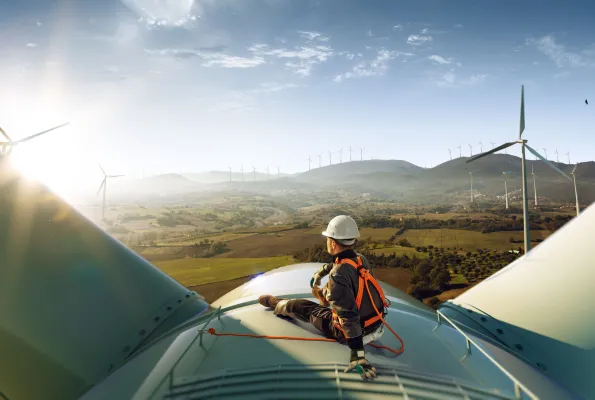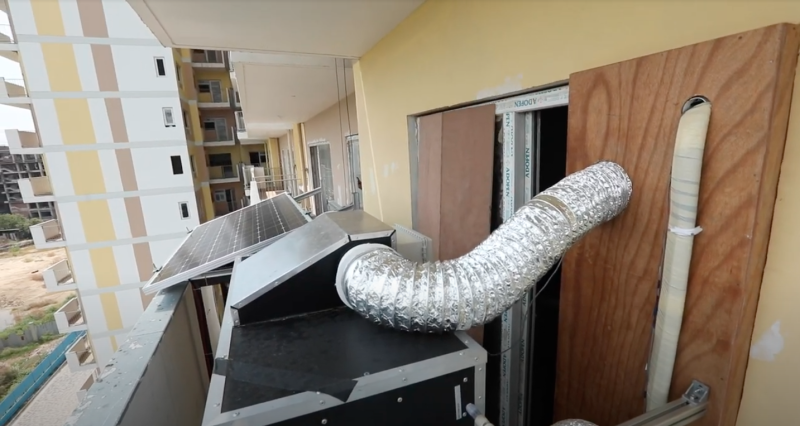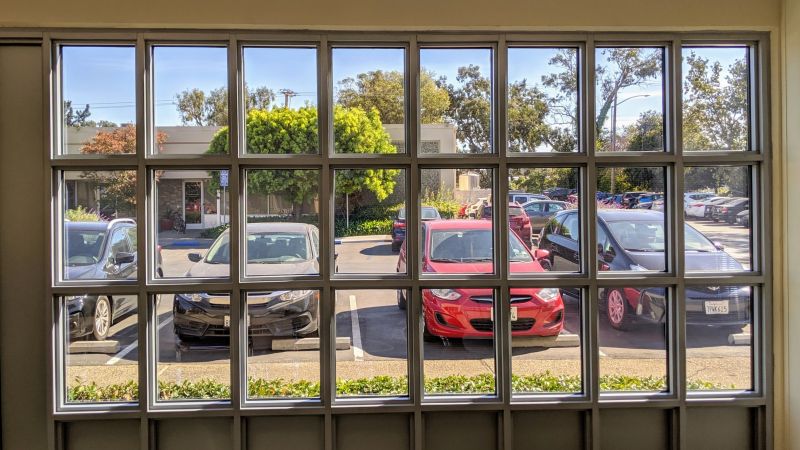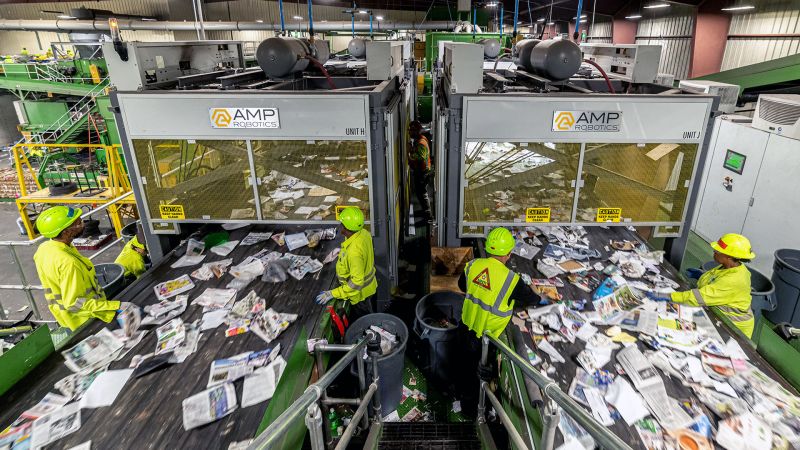
Climate change problem solvers: Startups with solutions
Climate change problem solvers: startups with solutions
Startups funded by the U.S. National Science Foundation are creating technologies intended to reduce the impact of climate change. From reducing carbon dioxide in the atmosphere and advancing alternative fuels to developing recycling robots and designing new batteries, startups are moving basic research out of the laboratory and toward broad-scale use.
America's Seed Fund, powered by NSF, helps startups navigate the earliest stages of technology translation -- investing roughly $200 million annually. Each startup can receive up to $2 million to support translational research and development to accelerate the creation of their technology and move it into the marketplace. Here are a few startups with technology solutions for one of the greatest challenges of our time:
Cutting carbon dioxide to clear the air
Carbon dioxide and other heat-trapping gases are the main drivers of global warming. Efforts need to be made to cut both the amount ofcarbon dioxide produced and the amount currently in the atmosphere.
One of the main contributors of greenhouse gases -- and rising surface temperatures -- is air conditioning. The number of air conditioners in operation is expected to increase by 3.5 billion units in the next 30 years, mostly in countries with humid, tropical conditions. An air conditioner performs two functions -- cooling and dehumidification. And the more humid the air, the more energy an air conditioner uses.
1. Transaera is tackling the problem by developing a technology that takes a different approach to dehumidification by using a new type of adsorbent material. The company's process reduces the energy required to cool the air via a sponge-like material that grabs moisture from the atmosphere, enabling the unit to cool the air more efficiently. A second step uses the heat generated by the air conditioner to dry the material for the next cycle. This reduces the load on the cooling system and allows it to run with less electricity.
2. Opus 12 has developed a device that recycles carbon dioxide into chemicals and fuels. The device uses water and electricity to produce higher-energy carbon-based products and is designed to reduce the carbon footprint of large polluters while creating a new revenue stream from what is discarded today as a waste product.
3. In addition to carbon dioxide, other gases can also significantly increase climate change. Loci Controls is focused on enabling real time measurement and control of landfill gas collection, especially where methane is vented to the environment. Automating the process of methane capture can lead to decreased fugitive emissions, while reducing the cost of operations can improve the economics of the landfill gas sector.
Developing sustainable energy sources to meet growing demand
Producing clean electricity by developing new fuel sources and making technologies such as wind and solar production more efficient is another way to reduce greenhouse gas emissions.
1. ClearFlame Engine Technologies developed a means to allows diesel engines to run on a wider variety of fuels. The company's clear combustion approach enables diesel-style engines to burn low-carbon alternative fuels like ethanol and methanol and produce the same power as diesel combustion. By replacing diesel fuel with cleaner alternatives, ClearFlame enables heavy machine operators to continue to use more efficient and durable diesel engines but achieve cleaner emissions without added system cost.
2. Kontak has developed a method to store, transport and use hydrogen as an alternative fuel. By using a class of organic compounds that can store hydrogen and release it as needed, fuel suppliers can use same infrastructure that delivers gasoline, diesel and ethanol to transport liquid hydrogen.
3. Keystone Tower Systems is working on reducing the cost of wind energy by creating a new, on-site turbine construction method. The company's tapered spiral welding manufacturing process performs all rolling and welding operations at the same time. The technology enables the erection of larger towers that can take advantage of stronger, steadier winds at higher altitudes. Keystone's production equipment can be operated at the construction site, creating locally based manufacturing jobs and increasing American competitiveness with overseas producers.
4. Ubiquitous Energy is developing transparent solar technology that could serve as power-producing windows for commercial and residential buildings or on smartphones. The company redesigned the solar cell so that it can be incorporated into window glass. The glass selectively harvests non-visible light to produce solar energy while letting visible light pass through. Ubiquitous Energy boasts window transparencies between 50% and 90%, unlike competitors that offer alternatives that are mostly opaque.
Creating environmentally friendly building materials
Other startups are working to make it more environmentally friendly to produce building materials.
1. For example, every year, 1.23 trillion bricks are produced, resulting in 800 million tons of carbon dioxide emission, according to Biomason. The company has developed a product -- biocement -- that is created using bacteria. The base material is grown in ambient temperatures using a natural calcium carbonate cement formation induced by a microorganism. This reduces the amount of carbon emissions related to the cement and concrete industry, and building materials made using biocement are being used for commercial and residential projects, the company said.
2. Boston Metal is developing a new method that could produce cleaner, cheaper, greener steel and stainless steel. The project focuses on the production of iron and ferrochromium, which are the basis of many high-performance steels. The process, called molten oxide electrolysis using an inert anode material, has been demonstrated at the laboratory scale. If successful, the team could produce the starting materials for high-performance steels of higher quality at a lower cost and with lower environmental impact than current methods.
Improving means of recycling
Even as new and improved methods of production are developed, there will still be a need to recycle materials used. Several companies are working on new approaches to make recycling more efficient and possible on a large scale.
1. Re:3D has developed industrial printers, named Gigabots, that use recycled material to produce products. The company's Gigabots use reclaimed plastics and provide the capability to conduct rapid prototyping, mass customization. and low-cost fabrication. The ability to use locally available raw materials makes the printers well-suited for low-volume industrial manufacturing for price sensitive and emerging markets.
2. Battery Resourcers created a recycling process that transforms battery materials into new cathodes for new battery manufacturing. The company's goal is to increase recycling rates of spent lithium-ion batteries by providing an economically viable domestic recycling option. The low-cost cathode materials for the battery industry may further enable green technologies like electric vehicles, solar and wind.
3. AMP Robotics applies artificial intelligence and robotics to modernize recycling, sorting commodities and waste more safely. The company is creating a scalable, integrated robotics system that autonomously sorts and recovers plastics, cardboard, paper, and other materials for raw material processing.
4. Litterati is also using artificial intelligence, integrating image recognition and machine learning algorithms into its software to better crowdsource litter data and cleanup activities. This enables local communities to identify, map, and collect litter for a cleaner local environment.
Learn more about NSF funding for startups at seedfund.nsf.gov.






